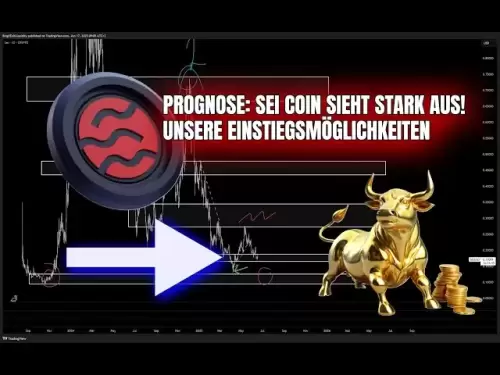-
 Bitcoin
Bitcoin $117,784.8122
6.03% -
 Ethereum
Ethereum $2,985.4492
7.49% -
 Tether USDt
Tether USDt $1.0002
-0.01% -
 XRP
XRP $2.6273
7.19% -
 BNB
BNB $688.8144
2.80% -
 Solana
Solana $164.1797
4.18% -
 USDC
USDC $0.9999
-0.01% -
 Dogecoin
Dogecoin $0.1989
10.08% -
 TRON
TRON $0.2961
2.12% -
 Cardano
Cardano $0.7259
15.27% -
 Hyperliquid
Hyperliquid $45.6326
10.22% -
 Sui
Sui $3.5222
9.17% -
 Chainlink
Chainlink $15.4621
7.77% -
 Bitcoin Cash
Bitcoin Cash $523.2404
1.57% -
 Stellar
Stellar $0.3163
8.13% -
 Avalanche
Avalanche $21.0098
7.48% -
 Hedera
Hedera $0.2044
14.78% -
 UNUS SED LEO
UNUS SED LEO $8.9812
0.11% -
 Shiba Inu
Shiba Inu $0.0...01346
7.75% -
 Toncoin
Toncoin $2.9763
3.02% -
 Litecoin
Litecoin $95.6221
5.22% -
 Polkadot
Polkadot $3.9508
7.50% -
 Monero
Monero $326.6734
1.59% -
 Uniswap
Uniswap $8.9185
8.19% -
 Dai
Dai $0.9999
-0.02% -
 Pepe
Pepe $0.0...01271
14.28% -
 Ethena USDe
Ethena USDe $1.0006
-0.03% -
 Bitget Token
Bitget Token $4.5228
2.14% -
 Aave
Aave $314.1302
6.41% -
 Pi
Pi $0.4909
0.64%
RSI indicator explained crypto
The RSI indicator helps crypto traders identify overbought or oversold conditions, with values above 70 signaling potential sell opportunities and below 30 suggesting possible buys.
Jul 11, 2025 at 03:28 pm
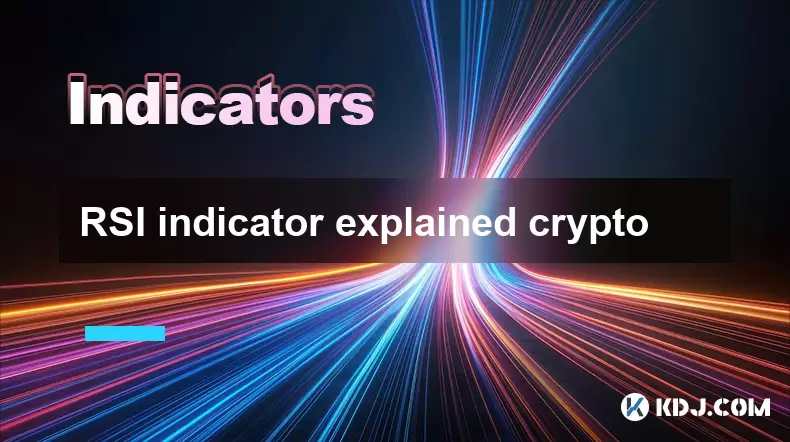
Understanding the RSI Indicator in Cryptocurrency Trading
The Relative Strength Index (RSI) is a momentum oscillator commonly used by cryptocurrency traders to evaluate overbought or oversold conditions in an asset. It was developed by J. Welles Wilder and typically measures the speed and change of price movements on a scale from 0 to 100. In the context of cryptocurrency trading, where volatility is high and market sentiment shifts rapidly, the RSI becomes a crucial tool for identifying potential reversals or continuation patterns.
How RSI Works in Crypto Markets
The RSI is calculated using the average gains and losses over a specified time period, usually 14 periods. These periods can be minutes, hours, days, or weeks depending on the chart being analyzed. The formula used is:
RSI = 100 – [100 / (1 + Average Gain / Average Loss)]
In crypto markets, this calculation helps determine whether an asset like Bitcoin or Ethereum is overbought (>70) or oversold (<30). However, due to the highly volatile nature of cryptocurrencies, these thresholds are not always reliable. Traders often adjust them to 80/20 or even 90/10 for more accurate readings during strong trends.
Interpreting RSI Divergence in Crypto Charts
One of the most powerful signals provided by the RSI is divergence, which occurs when the price of a cryptocurrency moves in the opposite direction of the RSI. For example:
- If the price makes a new high but the RSI fails to surpass its previous high, it indicates bearish divergence, suggesting a potential reversal.
- Conversely, if the price hits a new low while the RSI does not confirm that low, it's called bullish divergence, indicating strength beneath the surface.
Traders use these divergences to anticipate trend changes before they become apparent in price action. This is especially useful in the crypto space, where sudden news events or whale movements can cause rapid price swings.
Setting Up RSI on Crypto Trading Platforms
Most modern trading platforms like Binance, Coinbase Pro, and TradingView allow users to add the RSI indicator with just a few clicks. Here’s how to do it:
- Log into your preferred platform and open the chart of the cryptocurrency you're analyzing.
- Look for the indicators section, usually located at the top or bottom of the chart.
- Search for “RSI” and click to apply it to the chart.
- You can customize settings such as the period length (default is 14), overbought/oversold levels, and color schemes.
Once applied, the RSI will appear in a separate window below the main price chart. Monitoring this area allows traders to spot key levels and make informed decisions without cluttering the main chart view.
Combining RSI with Other Indicators in Crypto Strategies
While RSI alone provides valuable insights, combining it with other tools enhances its effectiveness. Popular combinations include:
- Moving Averages: Using the 50-day or 200-day moving average alongside RSI helps identify long-term trends and filter out false signals.
- MACD (Moving Average Convergence Divergence): When RSI shows overbought conditions and MACD crosses below the signal line, it reinforces a sell signal.
- Volume Indicators: High volume accompanying a breakout from overbought or oversold territory confirms the strength of the move.
These multi-indicator strategies are particularly effective in crypto trading, where false signals are common due to high volatility and thin order books on smaller-cap coins.
Common Mistakes When Using RSI in Crypto Trading
Many novice traders fall into traps when interpreting RSI values:
- Assuming overbought means sell immediately or oversold means buy right away. In strong uptrends, prices can remain overbought for extended periods.
- Ignoring the broader market context. For instance, during a Bitcoin bull run, altcoins may stay overbought longer than usual.
- Failing to adjust RSI parameters based on timeframes. Shorter timeframes like 5-minute charts require faster RSI settings (e.g., 7 periods) compared to daily charts.
Avoiding these pitfalls requires practice and a deep understanding of how the RSI behaves across different market conditions in the crypto ecosystem.
Frequently Asked Questions
Q: Can RSI be used for all cryptocurrencies?
Yes, the RSI can be applied to any cryptocurrency chart regardless of market cap or trading volume. However, results may vary depending on liquidity and volatility levels.
Q: Is RSI more effective on certain timeframes in crypto trading?
The RSI works best on higher timeframes like 4-hour or daily charts for spotting major trend reversals. Shorter timeframes may generate too many false signals due to increased volatility.
Q: How do I know if RSI is giving a false signal in crypto?
False signals often occur when RSI shows overbought or oversold levels but the price continues trending. Confirming with volume spikes, candlestick patterns, or other indicators can help filter out misleading signals.
Q: Should I rely solely on RSI for making trades in crypto?
No single indicator should be used in isolation. Combining RSI with other tools like support/resistance levels, Fibonacci retracements, or candlestick analysis increases accuracy and reduces risk.
Disclaimer:info@kdj.com
The information provided is not trading advice. kdj.com does not assume any responsibility for any investments made based on the information provided in this article. Cryptocurrencies are highly volatile and it is highly recommended that you invest with caution after thorough research!
If you believe that the content used on this website infringes your copyright, please contact us immediately (info@kdj.com) and we will delete it promptly.
- Binance and the Future of Sharia-Compliant Multi-Token Staking: A New Frontier?
- 2025-07-11 22:50:12
- Bitcoin Blasts Past $118,000: What's Fueling This Price Surge?
- 2025-07-11 22:30:11
- Crypto Presales and ROI Potential: Is BlockchainFX the Next Shiba Inu?
- 2025-07-11 23:10:11
- TRON, Stablecoins, and Settlements: A New Era?
- 2025-07-11 22:50:12
- Crypto, Diversify, Potential Returns: Unearthing 40x Opportunities
- 2025-07-11 23:15:12
- Coinbase, Perplexity AI, and Snorter Token: The AI-Powered Crypto Revolution
- 2025-07-11 23:20:11
Related knowledge

RSI indicator explained crypto
Jul 11,2025 at 03:28pm
Understanding the RSI Indicator in Cryptocurrency TradingThe Relative Strength Index (RSI) is a momentum oscillator commonly used by cryptocurrency tr...
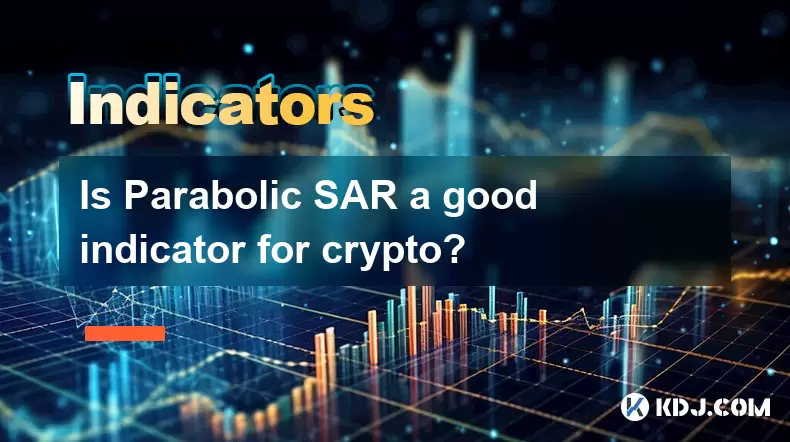
Is Parabolic SAR a good indicator for crypto?
Jul 11,2025 at 02:15pm
Understanding the Parabolic SAR IndicatorThe Parabolic SAR (Stop and Reverse) is a technical analysis tool developed by J. Welles Wilder, primarily us...
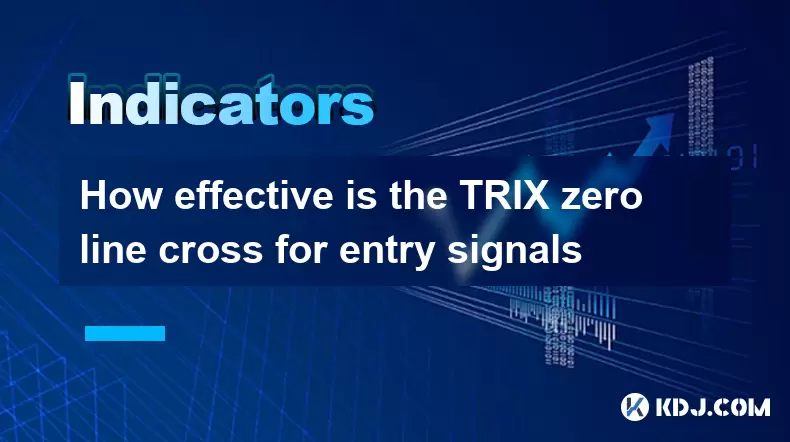
How effective is the TRIX zero line cross for entry signals
Jul 11,2025 at 02:28pm
Understanding the TRIX Indicator and Its Role in Cryptocurrency TradingThe TRIX (Triple Exponential Average) is a momentum oscillator widely used in t...
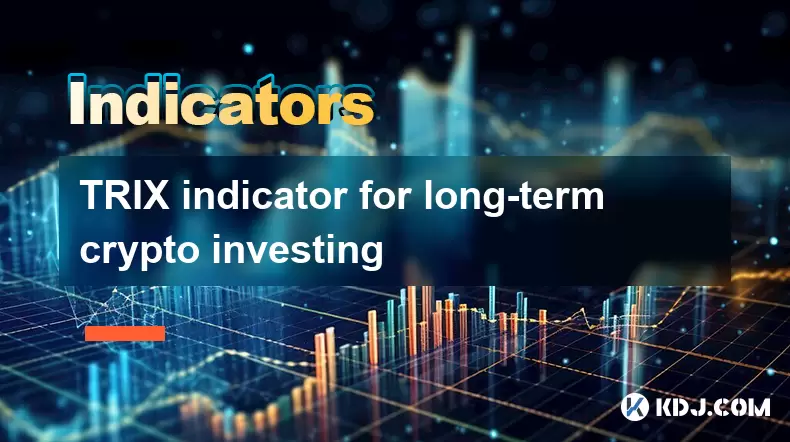
TRIX indicator for long-term crypto investing
Jul 11,2025 at 11:49pm
What Is a Crypto Airdrop?A crypto airdrop is a distribution of free tokens or coins to wallet addresses, usually as part of a marketing strategy or co...
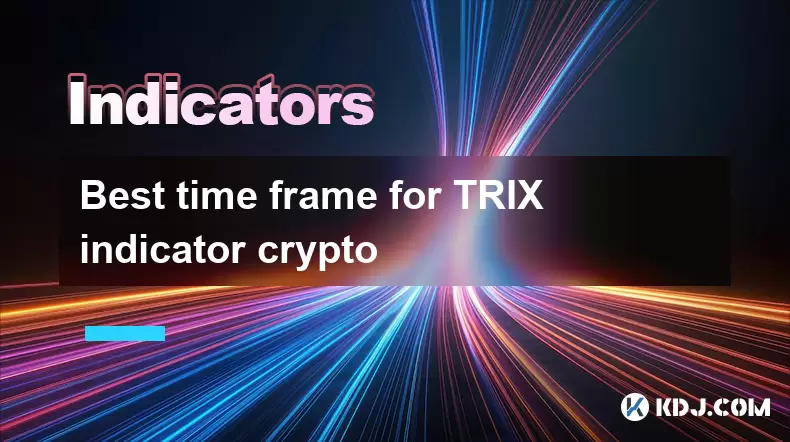
Best time frame for TRIX indicator crypto
Jul 11,2025 at 04:21pm
Understanding the TRIX Indicator in Cryptocurrency TradingThe TRIX indicator, short for Triple Exponential Average, is a momentum oscillator commonly ...
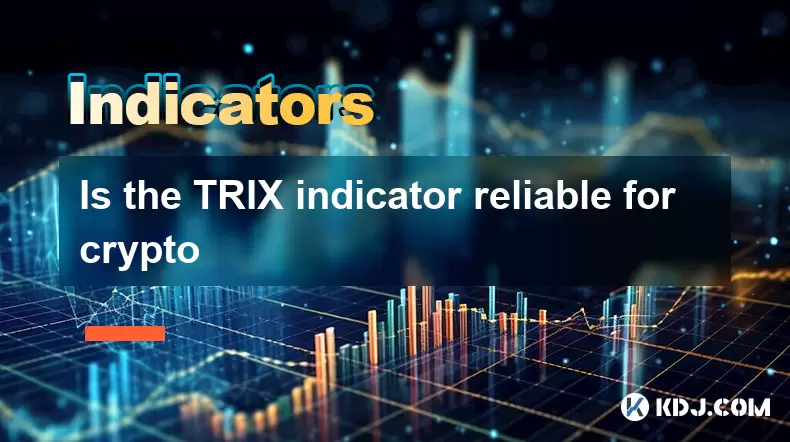
Is the TRIX indicator reliable for crypto
Jul 11,2025 at 01:00pm
Understanding the TRIX Indicator in Cryptocurrency TradingThe TRIX indicator, short for Triple Exponential Average, is a momentum oscillator primarily...

RSI indicator explained crypto
Jul 11,2025 at 03:28pm
Understanding the RSI Indicator in Cryptocurrency TradingThe Relative Strength Index (RSI) is a momentum oscillator commonly used by cryptocurrency tr...

Is Parabolic SAR a good indicator for crypto?
Jul 11,2025 at 02:15pm
Understanding the Parabolic SAR IndicatorThe Parabolic SAR (Stop and Reverse) is a technical analysis tool developed by J. Welles Wilder, primarily us...

How effective is the TRIX zero line cross for entry signals
Jul 11,2025 at 02:28pm
Understanding the TRIX Indicator and Its Role in Cryptocurrency TradingThe TRIX (Triple Exponential Average) is a momentum oscillator widely used in t...

TRIX indicator for long-term crypto investing
Jul 11,2025 at 11:49pm
What Is a Crypto Airdrop?A crypto airdrop is a distribution of free tokens or coins to wallet addresses, usually as part of a marketing strategy or co...

Best time frame for TRIX indicator crypto
Jul 11,2025 at 04:21pm
Understanding the TRIX Indicator in Cryptocurrency TradingThe TRIX indicator, short for Triple Exponential Average, is a momentum oscillator commonly ...

Is the TRIX indicator reliable for crypto
Jul 11,2025 at 01:00pm
Understanding the TRIX Indicator in Cryptocurrency TradingThe TRIX indicator, short for Triple Exponential Average, is a momentum oscillator primarily...
See all articles


























